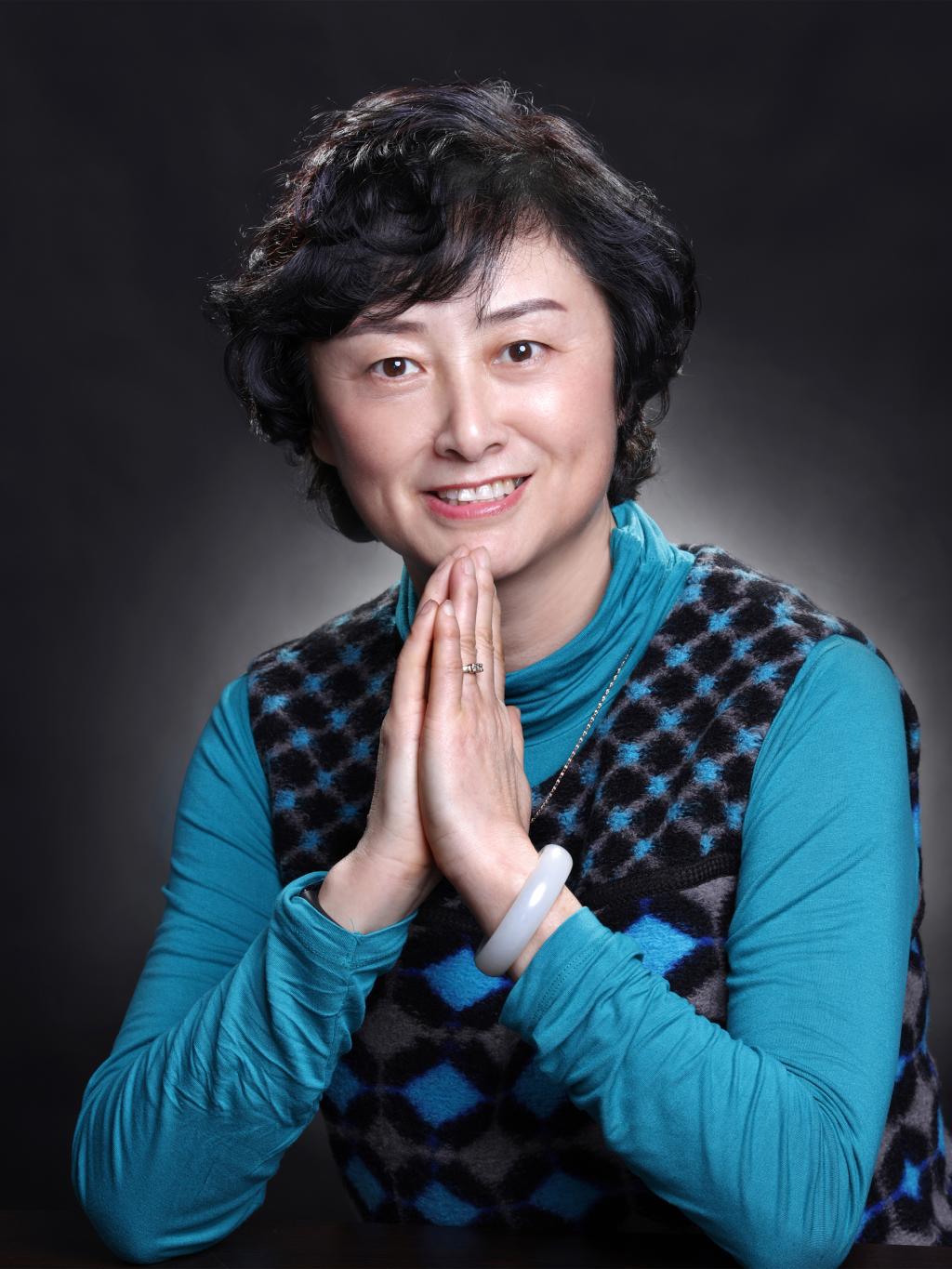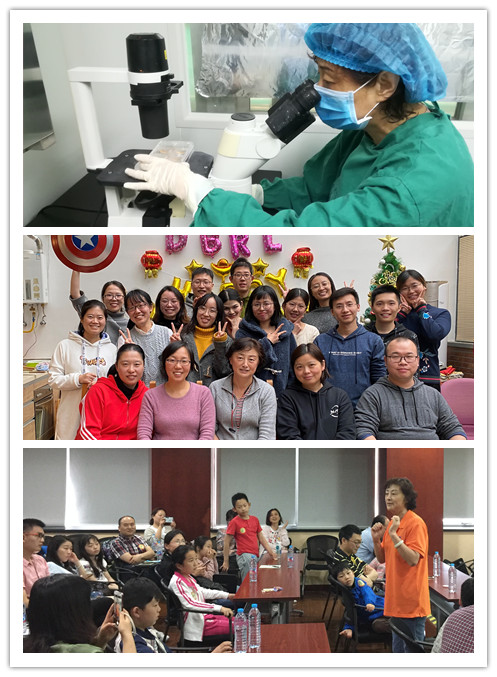研究組長介紹
 金穎,研究員,博士生導(dǎo)師。中國醫(yī)學(xué)科學(xué)院/北京協(xié)和醫(yī)科大學(xué)基礎(chǔ)醫(yī)學(xué)研究所病理生理學(xué)/藥理學(xué)博士,美國北德克薩斯州大學(xué)健康科學(xué)中心Research Associate (1988-1994),美國德克薩斯大學(xué)西南醫(yī)學(xué)中心Research Fellow (1994-1998)。上海交通大學(xué)特聘教授,上海交通大學(xué)基礎(chǔ)醫(yī)學(xué)院特聘教授,中國科學(xué)院上海營養(yǎng)與健康研究所課題組長。上海曙光學(xué)者、中國科學(xué)院“百人計(jì)劃”、第二屆百名華僑華人專業(yè)人士杰出創(chuàng)業(yè)獎(jiǎng)、上海市優(yōu)秀學(xué)科帶頭人、上海市“三八”紅旗手、上海市領(lǐng)軍人才、上海交通大學(xué)優(yōu)秀共產(chǎn)黨員、中國科學(xué)院 “朱李月華優(yōu)秀教師”和杰出研究員等榮譽(yù)獲得者。主要研究方向?yàn)槎嗄芨杉?xì)胞命運(yùn)決定的分子調(diào)控。先后任J Biol Chem雜志編委,Stem Cell Research and Therapy雜志編委,《上海交通大學(xué)學(xué)報(bào)(醫(yī)學(xué)版)》編委,《中華細(xì)胞與干細(xì)胞雜志》副主編,國際干細(xì)胞研究學(xué)會(huì)(ISSCR)會(huì)員、干細(xì)胞研究和臨床轉(zhuǎn)化指南更新任務(wù)組成員(2014年-2016年),上海市細(xì)胞生物學(xué)學(xué)會(huì)理事,中國細(xì)胞生物學(xué)學(xué)會(huì)細(xì)胞信號(hào)轉(zhuǎn)導(dǎo)分會(huì)委員,中國細(xì)胞生物學(xué)學(xué)會(huì)干細(xì)胞生物學(xué)分會(huì)副會(huì)長等。在Cell Stem Cell、 Cell Res、Dev Cell、J Clin Invest和PNAS等學(xué)術(shù)期刊上發(fā)表通訊作者論文70余篇,先后獲得教育部自然科學(xué)獎(jiǎng)二等獎(jiǎng)、上海市科學(xué)技術(shù)獎(jiǎng)二等獎(jiǎng)和三等獎(jiǎng),以及中國干細(xì)胞研究創(chuàng)新獎(jiǎng)。
金穎,研究員,博士生導(dǎo)師。中國醫(yī)學(xué)科學(xué)院/北京協(xié)和醫(yī)科大學(xué)基礎(chǔ)醫(yī)學(xué)研究所病理生理學(xué)/藥理學(xué)博士,美國北德克薩斯州大學(xué)健康科學(xué)中心Research Associate (1988-1994),美國德克薩斯大學(xué)西南醫(yī)學(xué)中心Research Fellow (1994-1998)。上海交通大學(xué)特聘教授,上海交通大學(xué)基礎(chǔ)醫(yī)學(xué)院特聘教授,中國科學(xué)院上海營養(yǎng)與健康研究所課題組長。上海曙光學(xué)者、中國科學(xué)院“百人計(jì)劃”、第二屆百名華僑華人專業(yè)人士杰出創(chuàng)業(yè)獎(jiǎng)、上海市優(yōu)秀學(xué)科帶頭人、上海市“三八”紅旗手、上海市領(lǐng)軍人才、上海交通大學(xué)優(yōu)秀共產(chǎn)黨員、中國科學(xué)院 “朱李月華優(yōu)秀教師”和杰出研究員等榮譽(yù)獲得者。主要研究方向?yàn)槎嗄芨杉?xì)胞命運(yùn)決定的分子調(diào)控。先后任J Biol Chem雜志編委,Stem Cell Research and Therapy雜志編委,《上海交通大學(xué)學(xué)報(bào)(醫(yī)學(xué)版)》編委,《中華細(xì)胞與干細(xì)胞雜志》副主編,國際干細(xì)胞研究學(xué)會(huì)(ISSCR)會(huì)員、干細(xì)胞研究和臨床轉(zhuǎn)化指南更新任務(wù)組成員(2014年-2016年),上海市細(xì)胞生物學(xué)學(xué)會(huì)理事,中國細(xì)胞生物學(xué)學(xué)會(huì)細(xì)胞信號(hào)轉(zhuǎn)導(dǎo)分會(huì)委員,中國細(xì)胞生物學(xué)學(xué)會(huì)干細(xì)胞生物學(xué)分會(huì)副會(huì)長等。在Cell Stem Cell、 Cell Res、Dev Cell、J Clin Invest和PNAS等學(xué)術(shù)期刊上發(fā)表通訊作者論文70余篇,先后獲得教育部自然科學(xué)獎(jiǎng)二等獎(jiǎng)、上海市科學(xué)技術(shù)獎(jiǎng)二等獎(jiǎng)和三等獎(jiǎng),以及中國干細(xì)胞研究創(chuàng)新獎(jiǎng)。
研究方向與進(jìn)展
多年來集中研究多能干細(xì)胞,尤其是人胚胎干細(xì)胞,在體外增殖和分化的調(diào)控機(jī)制,致力于揭示維持胚胎干細(xì)胞無限自我更新的信號(hào)通路、轉(zhuǎn)錄因子和表觀遺傳調(diào)控因子等,旨在優(yōu)化人胚胎干細(xì)胞的體外培養(yǎng)體系。同時(shí),還關(guān)注人胚胎干細(xì)胞如何定向分化為神經(jīng)細(xì)胞,尤其是如何形成神經(jīng)系統(tǒng)不同區(qū)域的神經(jīng)祖細(xì)胞,為獲得臨床疾病治療需要的功能細(xì)胞奠定基礎(chǔ)。
主要科研項(xiàng)目
1. 31730055轉(zhuǎn)錄后選擇性剪接相關(guān)基因C20ORF14在人胚胎干細(xì)胞自我更新維持中的功能和機(jī)制研究,國家自然科學(xué)基金重點(diǎn)項(xiàng)目,2018.01-2022.12,342.4萬元,在研,項(xiàng)目負(fù)責(zé)人金穎;
2. WF410170022上海交通大學(xué)“雙一流”建設(shè)配套項(xiàng)目,2018.07-2021.06,280萬元,在研,項(xiàng)目負(fù)責(zé)人金穎;
3. 2016YFA0100100多能干細(xì)胞自我更新與維持的調(diào)控機(jī)制研究,科技部國家重點(diǎn)研發(fā)計(jì)劃“干細(xì)胞及轉(zhuǎn)化研究”重點(diǎn)專項(xiàng),2016.07-2021.06,2789萬元,在研,項(xiàng)目負(fù)責(zé)人金穎;
4. 19ZR1428300VEGF信號(hào)通路在維持人胚胎干細(xì)胞自我更新和全能性中的功能和分子機(jī)制,上海市科委自然科學(xué)基金,2019.07-2022.06,20萬元,在研,項(xiàng)目負(fù)責(zé)人李慧;
5. 16PJD031Oct4泛素連接酶在早期胚胎發(fā)育過程的功能與機(jī)制研究,上海市浦江人才計(jì)劃,2016.09-2018.08,20萬元,已結(jié)題,項(xiàng)目負(fù)責(zé)人廖兵;
6. 31471393轉(zhuǎn)錄因子SOX2在人胚胎干細(xì)胞和神經(jīng)祖細(xì)胞中的重要作用及機(jī)制研究,國家自然科學(xué)基金面上項(xiàng)目,2014.01-2018.12,90萬元,已結(jié)題,項(xiàng)目負(fù)責(zé)人金穎;
7. 31471231Oct4泛素連接酶在發(fā)育多能性的建立和維持中的作用及機(jī)制研究,國家自然科學(xué)基金面上項(xiàng)目,2014.01-2018.12,80萬元,已結(jié)題,項(xiàng)目負(fù)責(zé)人廖兵;
8. 31271456轉(zhuǎn)錄共激活因子Citedl促進(jìn)胚胎干細(xì)胞向滋養(yǎng)層分化,國家自然科學(xué)基金面上項(xiàng)目,2012.01-2016.12,80萬元,已結(jié)題,項(xiàng)目負(fù)責(zé)人李慧。
代表性論文、專著與專利
1) Fang Z, Liu X, Wen J, Tang F, Zhou Y, Jing N, Jin Y* (2019) SOX21 ensures rostral forebrain identity by suppression of WNT8B during neural regionalization of human embryonic stem cells. Stem Cell Reports. 13: 1038-1052.
2) Zhu Z, Li C, Zeng Y, Ding J, Qu Z, Gu J, Ge L, Tang F, Huang X, Zhou C, Wang P, Zheng D and Jin Y* (2017) PHB associates with the HIRA complex to control an epigenetic-metabolic circuit in human ESCs. Cell Stem Cell. 20: 274-289.
3) Zhou C, Yang X, Sun Y, Yu H, Zhang Y* and Jin Y* (2016) Comprehensive profiling reveals mechanisms of SOX2-mediated cell fate specification in human ESCs and NPCs. Cell Res. 26: 171-189.
4) Zhu L, Zhang S and Jin Y* (2014) Foxd3 suppresses NFAT-mediated differentiation to maintain self-renewal of embryonic stem cells. EMBO Rep. 15: 1286-96.
5) Yang H, Liu Z, Ma Y, Zhong C, Yin Q, Zhou C, Shi D, Cai Y, Zhao H, Wang H, Tang F, Wang Y, Zhang C, Lai D, Jin Y*, Sun Q*, Li J* (2013) Generation of haploid embryonic stem cells from Macaca fascicularis monkey parthenotes. Cell Res. 23: 1187-1200.
6) Cui L, Guan Y, Qu Z, Zhang J, Liao B, Ma B, Qian J, Li D, Li W, Xu G* and Jin Y* (2013) Wnt signaling determines tumorigenicity and function of ESC-derived retinal progenitors. J Clin Invest. 123: 1647-1661.
7) Li X, Zhu L, Yang A, Lin J, Tang F, Jin S, Wei Z, Li J and Jin Y* (2011) Calcineurin-NFAT signaling critical regulates early lineage specification in mouse embryonic stem cells and embryos. Cell Stem Cell. 8: 46-58.
8) Fang H, Yang Y, Li C, Fu S, Yang Z, Jin G, Wang, K, Zhang J*, Jin Y* (2010) Transcriptome analysis of early organogenesis in human embryos. Developmental Cell. 19: 174-184.
9) Li L, Sun L, Gao F, Jiang J, Yang Y, Li C, Gu J, Wei Z, Yang A, Lu R, Ma Y, Tang F, Kwon S, Zhao Y, Li S, Jin Y* (2010) Stk40 links the pluripotency factor Oct4 to the Erk/MAPK pathway and controls extraembryonic endoderm differentiation. PNAS. 107: 1402-1407.
10) Liao B and Jin Y* (2010) Wwp2 mediates Oct4 ubiquitination and its auto-ubiquitination in a dosage-dependent manner. Cell Res. 20: 332-344.
11) Li H, Wang B, Yang A, Lu R, Wang W, Zhou Y, Shi G, Kwon SW, Zhao Y, Jin Y*(2009) Ly-1 antibody reactive clone is an important nucleolar protein for control of self-renewal and differentiation in embryonic stem cells. Stem Cells. 27: 1244-1254.
12) Xu H, Wang W, Li C, Yu H, Yang A, Wang B, Jin Y* (2009) WWP2 promotes degradation of transcription factor OCT4 in human embryonic stem cells. Cell Res.19: 561-573.
團(tuán)隊(duì)介紹
研究組現(xiàn)有工作人員7人,其中副研究員2人、實(shí)驗(yàn)師2人、助理實(shí)驗(yàn)師2人、博士后1人。
主要研究骨干——
李慧副研究員,碩士生導(dǎo)師。中國科學(xué)院上海生命科學(xué)研究院發(fā)育生物學(xué)博士,美國國立衛(wèi)生院NIH/環(huán)境健康科學(xué)研究所NIEHS訪問學(xué)者。多年來一直從事多能干細(xì)胞自我更新與分化的分子調(diào)控機(jī)制的研究。先后主持國家自然基金青年及面上項(xiàng)目3項(xiàng)、上海市科委自然基金、基礎(chǔ)重點(diǎn)項(xiàng)目及啟明星人才計(jì)劃等;此外,還參加了多項(xiàng)國家重點(diǎn)研發(fā)計(jì)劃、“973”項(xiàng)目、國家自然科學(xué)基金重點(diǎn)項(xiàng)目。以第一作者或通訊作者身份在SCI收錄的較高水平國際學(xué)術(shù)期刊上發(fā)表多篇論文。
代表性論文
1) Xu Y#, Luo X#, Fang Z, Zheng X, Zeng Y, Zhu C, Gu J, Hu G, Jin Y*, Li H*. (2018) Transcription coactivator CITED1 acts as an inducer of trophoblast-like state from mouse embryonic stem cells through the activation of BMP signaling. Cell Death Dis. 2018 Sep 11; 9(9):924.
2) Liu J, Luo X, Xu Y, Gu J, Tang F, Jin Y*, Li H*. Single-stranded DNA binding protein Ssbp3 induces differentiation of mouse embryonic stem cells into trophoblast-like cells. Stem Cell Res Ther. 2016 May 28; 7(1):79.
3) Luo X, Wang B, Tang F, Zhang J, Zhao Y, Li H*, Jin Y*. Wwp2 targetsSRG3, a scaffold protein of the SWI/SNF-like BAF complex, for ubiquitination and degradation. Biochem Biophys Res Commun. 2014 Jan 17; 443(3):1048-53.
4) Yang A, Shi G, Zhou C, Lu R, Li H, Sun L, Jin Y*. Nucleolin maintains embryonic stem cell self-renewal by suppression of p53 protein-dependent pathway. J Biol Chem. 2011 Dec 16; 286(50):43370-82.
5) Li H#, Wang B#, Yang A#, Lu R, Wang W, Zhou Y, Shi G, Kwon SW, Zhao Y, Jin Y*. Ly-1 Antibody Reactive Clone Is an Important Nucleolar Protein for Control of Self-Renewal and Differentiation in Embryonic Stem Cells. Stem Cells. 2009 Mar 5; 27(6):1244-1254.
6) Li H, Zhang Z, Wang B, Zhang J, Zhao Y, Jin Y*. Wwp2-mediated ubiquitination of the RNA polymerase II large subunit in mouse embryonic pluripotent stem cells. Mol Cell Biol. 2007 Aug; 27(15):5296-305.
7) Xu HM, Liao B, Zhang QJ, Wang BB, Li H, Zhong XM, Sheng HZ, Zhao YX, Zhao YM, Jin Y*. Wwp2, an E3 ubiquitin ligase that targets transcription factor Oct-4 for ubiquitination. J Biol Chem. 2004 May 28; 279(22):23495-503.
主要研究骨干——
廖兵副研究員,碩士生導(dǎo)師。中國科學(xué)院上海生命科學(xué)研究院發(fā)育生物學(xué)博士,美國OMRF研究所博士后。多年來一直從事多能干細(xì)胞維持與分化的作用機(jī)制研究,在Oct4的蛋白質(zhì)翻譯后修飾,特別是泛素化修飾調(diào)控多能干細(xì)胞干性方面取得了一系列的研究成果。先后主持國家自然基金青年及面上項(xiàng)目2項(xiàng)、上海市浦江人才計(jì)劃項(xiàng)目;還作為項(xiàng)目骨干參加了多項(xiàng)國家重點(diǎn)研發(fā)計(jì)劃、“973”項(xiàng)目、國家自然科學(xué)基金重點(diǎn)項(xiàng)目。以第一作者或通訊作者身份在Cell Research、PNAS、Stem Cell Reports等學(xué)術(shù)期刊發(fā)表SCI論文數(shù)篇。作為第二完成人先后獲得教育部自然科學(xué)獎(jiǎng)二等獎(jiǎng)和上海市科學(xué)技術(shù)獎(jiǎng)三等獎(jiǎng)。
代表性論文
1) Hu J, Li S, Sun X, Fang Z, Wang L, Xiao F, Shao M, Ge L, Tang F, Gu J, Yu H, Guo Y, Guo X, Liao B*, Jin Y*. Stk40 deletion elevates c-JUN protein level and impairs mesoderm differentiation. J Biol Chem. 2019 Jun 21; 294(25):9959-9972.
2) Li S#, Xiao F#, Zhang J, Sun X, Wang H, Zeng Y, Hu J, Tang F, Gu J, Zhao Y, Jin Y*, Liao B*. Disruption of OCT4 Ubiquitination Increases OCT4 Protein Stability and ASH2L-B-Mediated H3K4 Methylation Promoting Pluripotency Acquisition. Stem Cell Reports. 2018 Oct 9; 11(4):973-987.
3) Liao B and Jin Y*.Wwp2 mediates Oct4 ubiquitination and its auto-ubiquitination in a dosage-dependent manner. Cell Res. 2010; 20(3):332-344.
4) Yang Y#, Liao B#, Wang S, Yan B, Jin Y, Shu H and Wang Y*. E3 ligase WWP2 negatively regulates TLR3- mediated innate immune response by targeting TRIF for ubiquitination and degradation. P Natl Acad Sci USA. 2013 Mar 26; 110(13):5115-5120.
5) Liao B, Zhong, X, Xu H, Xiao F, Fang Z, Gu J, Chen Y, Zhao Y and Jin Y*.Itch, an E3 ligase of Oct4, is required for embryonic stem cell self-renewal and pluripotency induction. J Cell Physiol. 2013 Jul; 228(7):1443-1451.
6) Xu H#, Liao B#, Zhang Q, Wang B, Li H, Zhong X, Sheng H, Zhao Y, Zhao Y, JinY*. Wwp2, an E3 ubiquitin ligase that targets transcription factor Oct4 for ubiquitination. J Biol Chem. 2004; 279:23495-23503.




